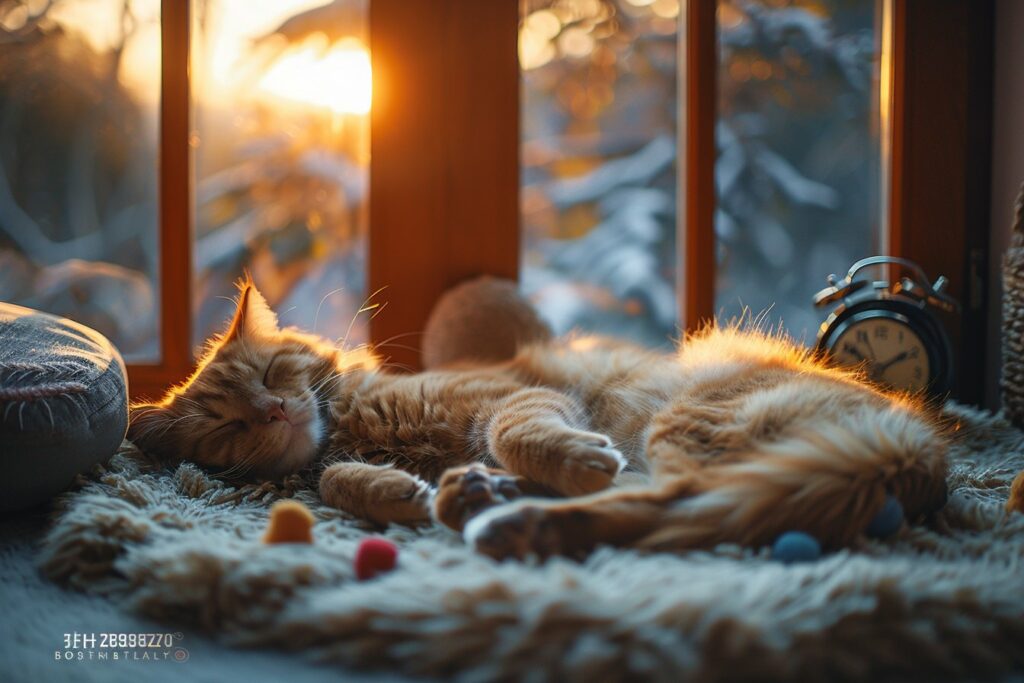As we prepare ourselves for the biannual ritual of adjusting our clocks for Daylight Saving Time, our pets’ schedules can also be affected by this change. Just like humans, pets have their routines, and even an hour’s difference can significantly impact their day-to-day lives. In this article, we’ll discuss some strategies and tips to help your pets adjust smoothly to the time change.
Understanding the Impact on Pets
Much like humans, animals have circadian rhythms that dictate their sleep patterns and daily activities. The switch to and from Daylight Saving Time can disrupt these rhythms, causing pets to feel disoriented and potentially experience increased stress. Domesticated animals, such as cats and dogs, depend on their human caregivers for food, playtime, and other essential needs. As a result, any significant shift in their regular schedule can affect them both physically and emotionally.
- Dogs: Dogs, especially hunting and sporting breeds, are likely to be more active during the early morning hours when they would naturally hunt. This can cause them to wake up earlier than desired and expect their usual activities, such as breakfast and walks, to happen sooner.
- Cats: Cats can become anxious if their feeding time is not consistent, leading to unwanted behavior and pestering their owners continuously for food.
Prepare Your Pets for the Time Change
Fortunately, there are various strategies you can implement to ease your pets into the new schedule brought about by Daylight Saving Time.
Gradually Adjust Their Schedule
One effective approach to help your pets adapt to the time change is by gradually shifting their routine ahead of time. Adjust their feeding, playtime, and walking schedule by 15 minutes every day, eventually reaching the desired one-hour difference. This incremental change will give your pets a chance to adapt slowly, reducing the likelihood of stress or anxiety.
Modify Feeding Patterns
For cats, try not to feed them immediately after waking up, as this can encourage them to pester you during the night. Instead, incorporate a brief play session before feeding, helping them associate food with an activity other than waking up. If your cat tends to get anxious about mealtime, ensure that they have access to toys and enrichment activities around the house before going to bed. This will keep them occupied until you’re ready to wake up and start the day.
Accommodate Puppy Training
If you’re currently training a puppy, it’s essential to adjust their bathroom break schedule during Daylight Saving Time transitions. Puppies generally cannot hold their bladder like adult dogs can, making it crucial to accommodate the last trip outside for the day and adjust their bedtime accordingly. Doing so minimizes the risk of accidents during the night and keeps the training process on track.
Building New Routines
Once the time change has occurred, it’s vital to establish consistency in your pet’s new routine. Pets rely on our behavior cues to build their daily patterns, so make sure you’re maintaining the same timings for feeding, playtime, and walks post-transition.
Remember, directly altering your pets’ schedules can seem confusing to them at first; however, most animals are highly adaptable and will adjust within a few days. Trust your pets and support them through the transition period by following the strategies mentioned above.
While Daylight Saving Time may be an unwelcome disruption for humans and pets alike, with a bit of planning, you can help ease your pets into the new schedule and ensure they remain happy and healthy. By being mindful of their needs, understanding the impact of the time change on their behavior, and making gradual adjustments to their routine, you’ll minimize any potential stress or anxiety during this transition period.

